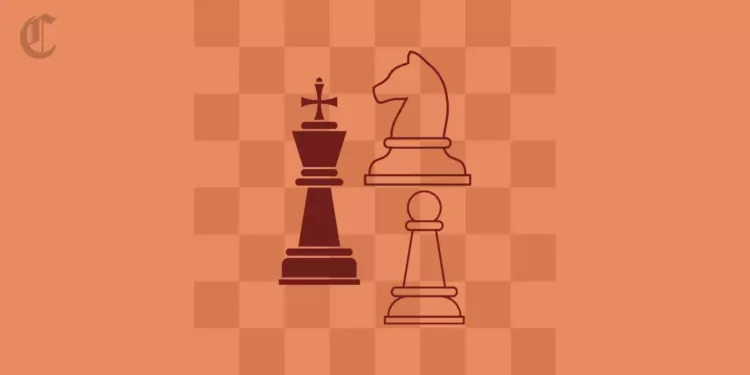In Chess, a skewer is when two pieces in a line are attacked by a Queen, Rook or Bishop. A skewer is the same tactic as the pin, except in the case of the skewer, the most valuable piece is the front piece, whereas in the pin, the more valuable piece is the one behind. So instead of being pinned the piece has to step out of the way allowing the piece behind it to be captured.
The front piece is often a King, but it may be another piece. Launching a skewer on a King, that also comes with check, can make the attack much more powerful.
To spot possible skewers (and pins) you first have to look for valuable pieces on the same diagonal, line or file. The second step is to find the right attacking piece. Let’s look at some examples of skewers so you can pin down the concept (pun intended).
Examples
Example #1
In the following example, white can administer a skewer by 1.Bc4+.
After 1.Bc4+ black has to move the king. E.g. 1…Kg7, after which white can capture the queen 2.Bxg8.
Example #2
After playing 1.Be4 in the diagram on the left the resulting position can be called a pin or a skewer, because the value of the front piece is the same as the value of the back piece.The name doesn’t matter either.
After 1…Rbb6 2. Bxc6 Rxc6 white has gained a rook for a bishop.
How To Avoid a Skewer
So how do you avoid a skewer? The example below is one way. At first sight, White seems to have a possibility for a skewer. But White doesn’t gain anything by the move 1.Be4.
Black is able to play 1…Rc1+ after which white has to play 2.Kg2 and black can move the second rook to a save place 2…Rb2.
You can avoid skewers by becoming aware of their possible existence, which now you do, and improving your board awareness overall. Seeing that your opponent could do this, but then you would do this, neutralizing the skewer threat.
In the next lesson we will learn how to checkmate with a Bishop and Knight.
I hope this guide on the Skewer Tactic helped you. if you liked this post, you may want to learn other Chess tactics like the double attack and castling.


